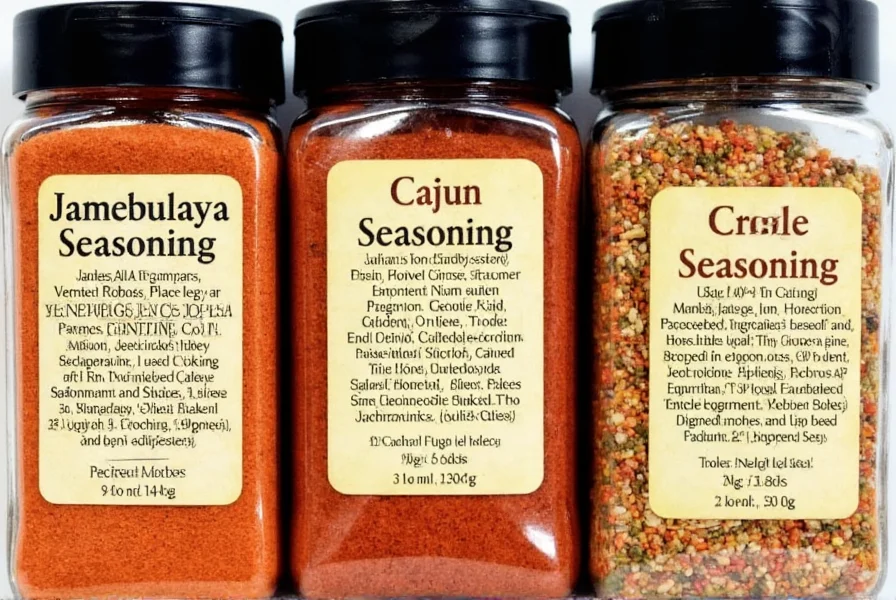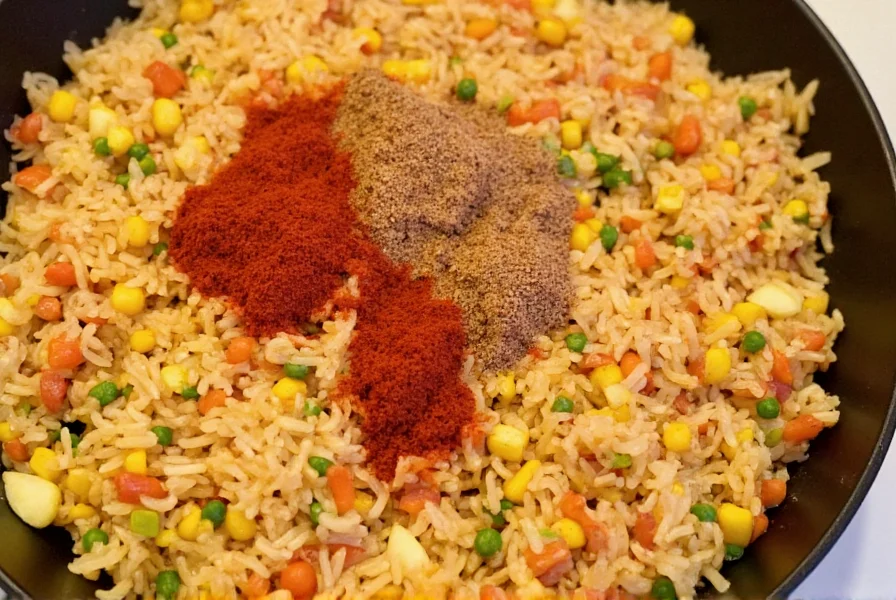Jambalaya seasoning is a signature Cajun-Creole spice blend typically containing paprika, cayenne pepper, garlic powder, onion powder, thyme, oregano, black pepper, and white pepper. Authentic blends avoid celery salt and bell peppers found in Creole seasoning, focusing instead on deep, smoky heat with balanced herbal notes. A standard homemade mix uses a 4:2:1 ratio of paprika to garlic powder to cayenne for customizable heat levels.
Understanding the precise composition of jambalaya seasoning separates authentic Louisiana cooking from generic spice mixes. This distinctive blend forms the flavor foundation of one of America's most celebrated regional dishes, with roots tracing back to 18th century Louisiana where French, Spanish, African, and Native American culinary traditions converged.
The Essential Components of Authentic Jambalaya Seasoning
While commercial blends vary, traditional jambalaya seasoning maintains specific characteristics that differentiate it from similar Cajun and Creole mixes. The core ingredients work in harmony to create that unmistakable Louisiana flavor profile:
| Core Ingredient | Function | Traditional Proportion |
|---|---|---|
| Paprika (preferably smoked) | Provides base color and earthy sweetness | 4 parts |
| Garlic powder | Delivers savory depth without burning | 2 parts |
| Cayenne pepper | Controls heat level (adjust to preference) | 1 part |
| Onion powder | Enhances savory notes | 1 part |
| Dried thyme | Contributes herbal complexity | 1/2 part |
| Dried oregano | Adds Mediterranean influence | 1/2 part |
| Black pepper | Provides sharp heat | 1/2 part |
| White pepper | Offers distinctive back-of-throat warmth | 1/4 part |
Unlike Creole seasoning which typically includes celery salt and dried bell peppers, authentic jambalaya seasoning focuses on pure spice elements that withstand long cooking times. The absence of salt in traditional blends allows cooks to control sodium levels separately, a crucial consideration for modern dietary needs.

Creating Your Own Homemade Jambalaya Seasoning
Commercial jambalaya seasonings often contain fillers and excessive salt. Crafting your own blend ensures freshness, customization, and authenticity. Here's a professional chef-tested recipe that yields approximately 1 cup of seasoning:
Basic Homemade Jambalaya Seasoning Recipe
- ¼ cup smoked paprika (key for authentic flavor)
- 2 tablespoons garlic powder
- 2 tablespoons onion powder
- 2 tablespoons cayenne pepper (adjust for heat preference)
- 1 tablespoon dried thyme
- 1 tablespoon dried oregano
- 1 tablespoon freshly ground black pepper
- 2 teaspoons white pepper
- 1 teaspoon ground coriander (optional but traditional)
Mix all ingredients thoroughly in a bowl, then transfer to an airtight container. Properly stored in a cool, dark place, homemade jambalaya seasoning maintains peak flavor for 4-6 months. For optimal freshness,制作 smaller batches as needed rather than large quantities.
Proper Usage Techniques for Perfect Results
Knowing how to use jambalaya seasoning properly makes the difference between good and exceptional results. Professional chefs follow these guidelines:
- Ratio guidance: Use 1-2 tablespoons per pound of protein or 2-3 tablespoons per pot of jambalaya (serving 4-6 people)
- Application timing: Add during the "holy trinity" sauté stage (onions, celery, bell peppers) to bloom flavors in oil
- Layering technique: Add half initially, then adjust with remaining seasoning after 20 minutes of cooking
- Heat management: Never add seasoning to smoking-hot oil as this burns delicate spices
For those concerned about sodium intake, this pure spice blend offers complete control. Simply omit added salt from your recipe and adjust seasoning quantity to taste. Those following specific dietary requirements can easily modify this base recipe while maintaining authentic flavor profiles.
Distinguishing Between Similar Louisiana Seasonings
Many home cooks confuse jambalaya seasoning with related blends. Understanding these differences prevents recipe failures:
- Jambalaya vs. Cajun seasoning: Cajun seasoning typically contains more black pepper and less paprika, with a sharper heat profile. It often includes additional spices like mustard powder.
- Jambalaya vs. Creole seasoning: Creole seasoning almost always contains celery salt and dried bell peppers, giving it a brighter, more vegetal profile compared to jambalaya's deeper spice focus.
- Regional variations: New Orleans-area blends tend to be milder with more herbs, while Acadiana region blends feature pronounced heat and smokiness.

Troubleshooting Common Jambalaya Seasoning Issues
Even experienced cooks encounter seasoning challenges. Here's how to fix common problems:
- Too spicy: Add equal parts sugar and tomato paste (1 tsp each per serving) to counteract heat without diluting flavor
- Too bland: Bloom additional seasoning in 1 tbsp oil before incorporating, never adding dry spices directly to finished dish
- Bitter aftertaste: Indicates burned spices - start over with fresh oil and add seasoning at lower temperature
- Flavor imbalance: Add ¼ tsp apple cider vinegar per serving to brighten muddled flavors
Remember that jambalaya seasoning continues developing flavor as the dish rests. Always allow at least 15 minutes of resting time before final seasoning adjustments for the most accurate taste assessment.
Storage and Freshness Preservation
Spice freshness dramatically impacts final dish quality. Follow these storage guidelines to maintain optimal flavor:
- Store in airtight glass containers away from light and heat sources
- Never keep spice containers above the stove or near dishwasher
- Label with creation date - discard after 6 months for peak flavor
- Consider freezing excess in ice cube trays with oil for ready-to-use portions
For extended shelf life, store whole spices and grind them as needed. Pre-ground spices lose potency rapidly due to increased surface area exposed to air and light.











 浙公网安备
33010002000092号
浙公网安备
33010002000092号 浙B2-20120091-4
浙B2-20120091-4